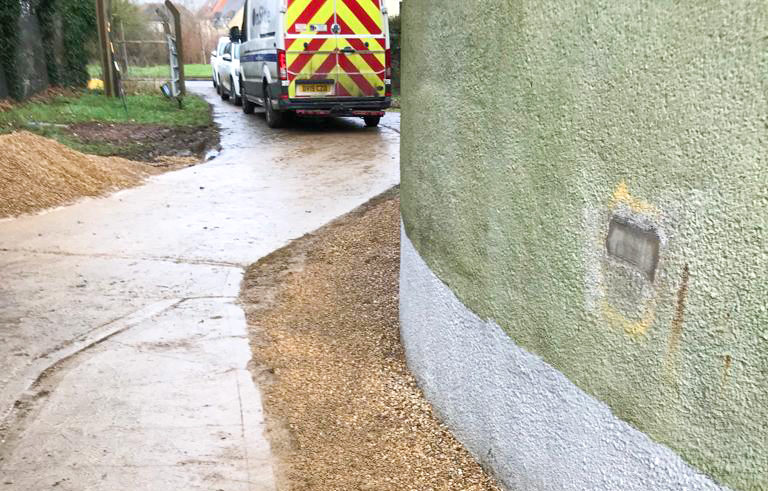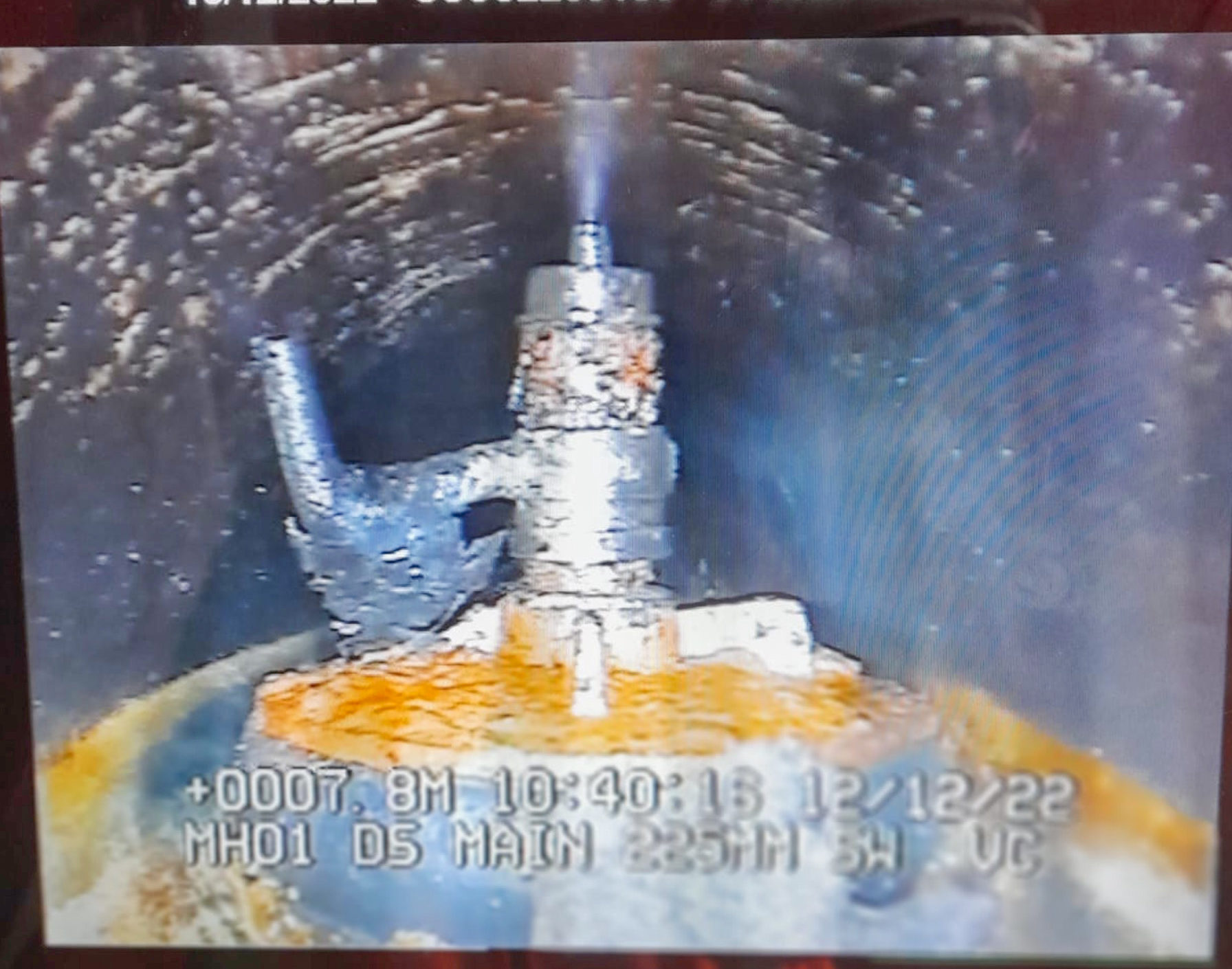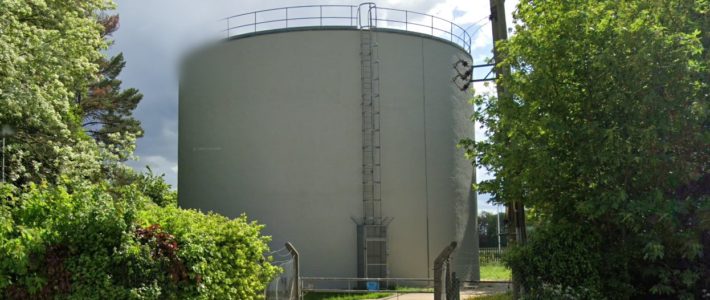OnSite Specialist Maintenance was instructed by South Staffordshire Water to undertake a structural inspection and external refurbishment of the St. Ives Service Reservoir at Houghton in Cambridgeshire, followed by a flood test of the reservoir roof and an internal defect investigation in order to subsequently clean and disinfect the inside. The project was overseen from start to finish by one of OnSite Specialist Maintenance’s technical project managers.
St. Ives Service Reservoir was constructed in c.1962. It has a diameter of 16 meters and a wall height of just over 13 meters. Its capacity is approximately 2.25 megalitres, or half a million gallons, with a reinforced concrete cylindrical wall and adjoining clear span domed reinforced concrete shell roof.
Inspection and survey
The wall is vertically orthogonally post-tensioned with grouted Macalloy bars and circumferentially with externally applied high-tensile wire which were installed using the preload method. They are encapsulated within a nominal 40 millimetres of mesh-reinforced gunite. There is no roof drainage, with rainwater being discharged directly over the edge.
The main purpose of the inspection and testing was to confirm whether there was any corrosion or breaks in the post tensioning wires that would affect the structural performance and safety of the reservoir. We were also looking for any defects in the gunite surface that could lead to future failure of the post tensioning.
The process included a hammer test to the gunite surface to identify any areas of delamination and a visual inspection and conductivity test of the post tensioning wires to confirm that there were no corrosion or breaks. We then carried out carbonation tests on the freshly removed gunite-covered sections that were broken out to create inspection slots.
All breaking out of the gunite surface was carried out with extreme care to avoid damaging the post tensioning wires. These were then cleaned and coated with a corrosion inhibitor and reinstated using an application cement mortar. This enabled us to provide a detailed structural report along with suggested remedial actions to ensure the reservoir’s continued safe structural operational use.
The external works comprised the excavation and removal of rubble around the perimeter, cleaning the reservoir wall and removal of graffiti using a high-pressure, hot water doff unit. A waterproof, protective, anti-carbonation coating was applied to the base of the wall which was then backfilled with new material. By using an MEWP, the entire structure was coated to ensure it remains protected and durable.

Collaborative working
With the assistance of our sister company, OnSite Central, we carried out a camera inspection of the overflow pipework. This uncovered a bung inside the pipe that was causing a blockage to the discharge pipe. After several discussions it was decided that a robotic cutter was the best option to remove the bung. This was used to cut the bung into several small manageable pieces which were then removed from the pipe ensuring a successful removal.
The solution
The site survey included:
- the recording of all assets
- structure construction details and dimensions
- access requirements
- all site-specific hazards
A detailed assessment was performed to enable us to carefully catalogue the areas of concern and recommend the best course of action. A report of recommendations was submitted to the client, proposing industry-recognised solutions. This ensured the client’s confidence in our ability to carry out the project successfully.
To download the full case study, click here.


